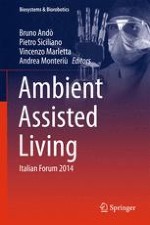2015 | OriginalPaper | Buchkapitel
Pedestrian Simulation: Considering Elderlies in the Models and in the Simulation Results
verfasst von : Stefania Bandini, Luca Crociani, Giuseppe Vizzari
Erschienen in: Ambient Assisted Living
Aktivieren Sie unsere intelligente Suche, um passende Fachinhalte oder Patente zu finden.
Wählen Sie Textabschnitte aus um mit Künstlicher Intelligenz passenden Patente zu finden. powered by
Markieren Sie Textabschnitte, um KI-gestützt weitere passende Inhalte zu finden. powered by
